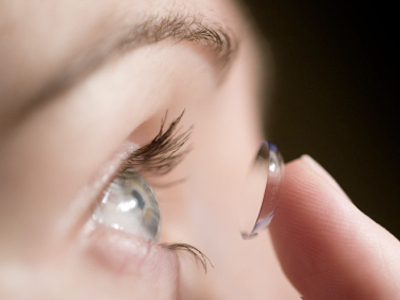
The cornea of the eye has a great deal of responsibility accounting for approximately two-thirds of the eye’s optical power. The history of the lens onto the creation of eyewear is extensive and majestic. Dating as far back as the 16th century with Leonardo Di Vinci’s description of the eye, he suggests submerging the eye into a bowl of water to alter vision. A century later and another visionary by the name of René Descartes had the idea of liquid filled tubes being in direct contact with the cornea to correct vision (this idea was deemed infeasible). Two centuries after that in the early 1800’s, Thomas Young fiddled with the idea of fixing water filled lenses to his own eyes with wax. Toward the end of the 1800’s a glass blower from Germany was able to produce a tolerable eye covering. In 1949 the very first corneal lens was patented.
Today the market for contacts continues to grow, with an estimated 2% global market hold in 2004. There are a few types of contacts ranging from, corrective (prescription), cosmetic (color), and therapeutic (eye bandages). Corrective lenses work with the pretense that a patient is either myopic or hyperopic, and addresses the visual impairment by fixing the refractive error. Similar to glasses, the lenses are designed in such a way that light is refracted evenly allowing light to pass through and modulate according to prescription. Lenses do have a shelf life of up to 30 days and have to be stored in solution to prevent them from drying out. Ridged lenses, soft lenses and hybrid lenses each fulfill a purpose depending of preference. In 1998 silicone lenses were produced and provided much greater comfort than the other types being sold. Every year complications arise concerning
contacts. Patients may infect their own eye when inserting or removing the small clear allowing microorganisms or bacteria to grow affecting the conjunctiva and eyelid. Another common mistake people make from time to time is wearing contacts that were not designed for their specific eye size. The FDA first approves all contacts sold in the United States.
- “Contact Lens.” Wikipedia. Wikimedia Foundation, 19 Mar. 2012. Web. 21 Mar. 2012 <http://en.wikipedia.org/wiki/Contact_lens>.
- “Cornea.” Wikipedia. Wikimedia Foundation, 18 Mar. 2012. Web. 21 Mar. 2012. <http://en.wikipedia.org/wiki/Cornea>.
- “MedicineNet.com.” Medterms. Web. 21 Mar. 2012. <http://www.medterms.com/script/main/art.asp?articlekey=10569>.
